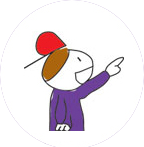|
|
Hello!
This month we are taking a look at a specific tool that you, as the worker, the parent and the individual we are working with can use. The tool is called a LIFEBOOK.
A lifebook is the individual's story, seen through their eyes. A life history book will tell the individual's story, from the moment when s/he first entered this world. It pulls together all the pieces of the individual's story AND helps them make sense of what has happened in their life. These books are generally used for individuals that have come from or are currently in the foster care system.
So what does this have to do with autism?! Take a look at the following story...
|
|
|
|
One Lifebook Story
"My son has classic autism and fairly severe PTSD. The PTSD is a result of 6 1/2 years of abuse and neglect, and major loss (lost two families - his bio family when he came into care at 3 1/2 years old, then his first foster family when he was removed from them and placed with us due to abuse/neglect 3 years later).
Traditional PTSD therapies such as talk therapy or play therapy aren't effective for my son, as he has severely limited verbal and social/play skills. We also learned from a therapist we took him to that, because of his autism and the communication issues that come with that, trying to address PTSD directly with him was likely to trigger and re-traumatize him (way too easy for him to misunderstand).
It took us 4 years to figure it out, but what has been the single biggest help for us in addressing some of the underlying grief issues that cause his PTSD was creating a lifebook. It frames his life into a coherent narrative in a visual format that he can understand. It doesn't talk about the abuse and neglect, as there was no way to appropriately include them, and I believe it would just upset him and re-trigger him. It does have a photo of his birthmom and him hugging the last time he saw her, when he was 5. That's the 'goodbye' page, where both of them clearly look very sad. For the time he spent in foster care, there weren't any photos available, so I took a picture of his old house, old school, etc., and managed to find a couple teensy tiny pictures on facebook. Did the best I could. The book then moves on to adoption and his life with us.
He looks at this book at least once a week. He really likes the part about his birth family, and will touch the picture of his mom holding him as a baby and say 'he looks just like me' and smile He looks at the page about his foster family, and generally just gets quiet.
Since I put together his lifebook for him, he's stopped crying for his foster mom at night (did that when he first moved in, then it resumed when he was re-triggered a year and a half ago by a couple sessions with a play therapist he used to see when he was in foster care with her. This trigger is what prompted me to make the lifebook). He's also stopped saying things like 'I'll be replaced,' 'you'll send me back,' and 'when do I go to my new house?' (all huge feats in language for him and completely heartbreaking). Instead, he now, whenever we're arriving home, says 'MY house. My forever house. Forever family. Yeah.' Pretty big progress."
--excerpt from adoption.com forum
|
| | |
|
|
|
Each individual we work with has their own story. Some of those individuals with autism may have been in the foster system or even adopted internationally. For our friends on the autism spectrum, we have learned that at times they learn best from pictures. A lifebook can help ease anxiety and stress that they may be going through.
Plus, according to adoptionlifebooks.com, "Kids learn best when they see, smell, feel and do. That is why the lifebook process works - it transforms the life story from a hit or miss auditory experience into a visual and sensory one. Kids experience the process of making a lifebook and get to be active participants."
|
|

Check out the sidebar for some resources to help you get started. The first resource applies directly to children with a developmental difference that are in, or have been in the foster care system.
|
|
|
Here I Am! A Lifebook Kit For Use With Children With Developmental Disabilities by Susan Schroen
Outlines strategies and provides simple pictures to help developmentally disabled children understand why they do not live at home with their families. The kit is designed for use by social workers, therapists, residential and mental health staff, foster parents and adoptive parents.
More Info
ADDITIONAL RESOURCES
Scrapbook Tips
Digital Lifebooks
Lifebook Resources
Free Downloadable Lifebooks
Lifebooks for Teens
Do's and Don't's of Lifebooking
Example Lifebook
Blank Lifebook
|
|
|
|
|
Upcoming
Webinars
|
Stay tuned for March when we offer a sneak preview of our April e-series that will be open to the public for Autism Awareness Month.
| |
|
|
|